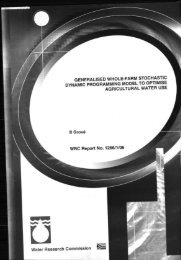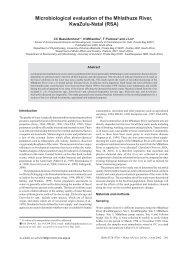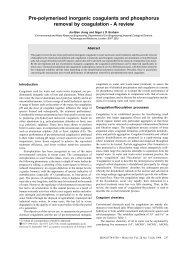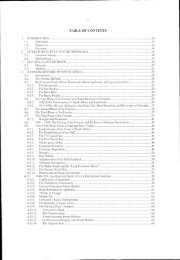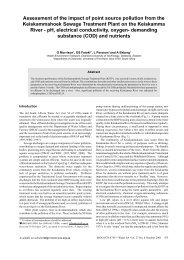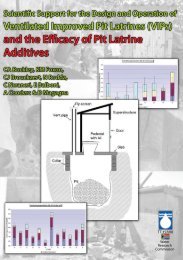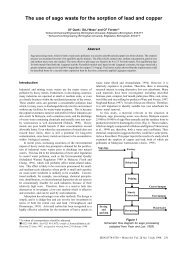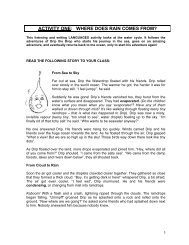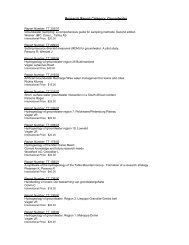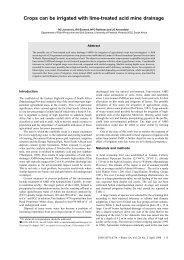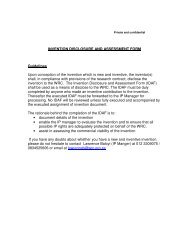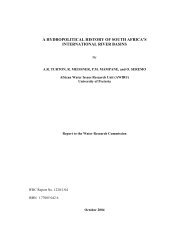A Methods Manual for the Collection, Preparation and Analysis of ...
A Methods Manual for the Collection, Preparation and Analysis of ...
A Methods Manual for the Collection, Preparation and Analysis of ...
You also want an ePaper? Increase the reach of your titles
YUMPU automatically turns print PDFs into web optimized ePapers that Google loves.
4. Diatoms – Colony <strong>for</strong>mation <strong>and</strong> attachmentDiatoms release mucilage through various structures in <strong>the</strong> cell wall to facilitate locomotionor attachment <strong>of</strong> <strong>the</strong> cells to various substrata. Mucilage secretions can also be used to <strong>for</strong>mcolonies <strong>of</strong> various patterns. This material must be eliminated <strong>for</strong> microscopic detailedexamination <strong>of</strong> <strong>the</strong> cell wall. After a diatom sample has undergone <strong>the</strong> necessary steps toprepare it <strong>for</strong> light microscopy at high magnifications all that can be seen is a silica structure.This skeleton or cell wall is typically referred to as <strong>the</strong> frustule. Chemical treatmenteliminates all organic material from both inside as well as outside <strong>the</strong> cell walls.1 23 45 6Fig. 1 shows <strong>the</strong> attachment <strong>of</strong> Cymbella sp. to a substratum with a mucilage stalks. Fig. 2 showsEncyonema caespitosum inhabiting a mucilage tube. Fig. 3 shows <strong>the</strong> dichotomously branchingmucilage stalks to which cells <strong>of</strong> Gomphonema sp. are attached. Fig. 4 Melosira varians with cellsattached both to <strong>the</strong> substratum <strong>and</strong> each o<strong>the</strong>r by mucilage pads. Fig. 5 stellar colonies <strong>of</strong> <strong>the</strong>diatom Asterionella <strong>for</strong>mosa. Fig. 6 Achnanthidium minutissimum attached by means <strong>of</strong> mucilagestalks to Lyngbya sp.6



